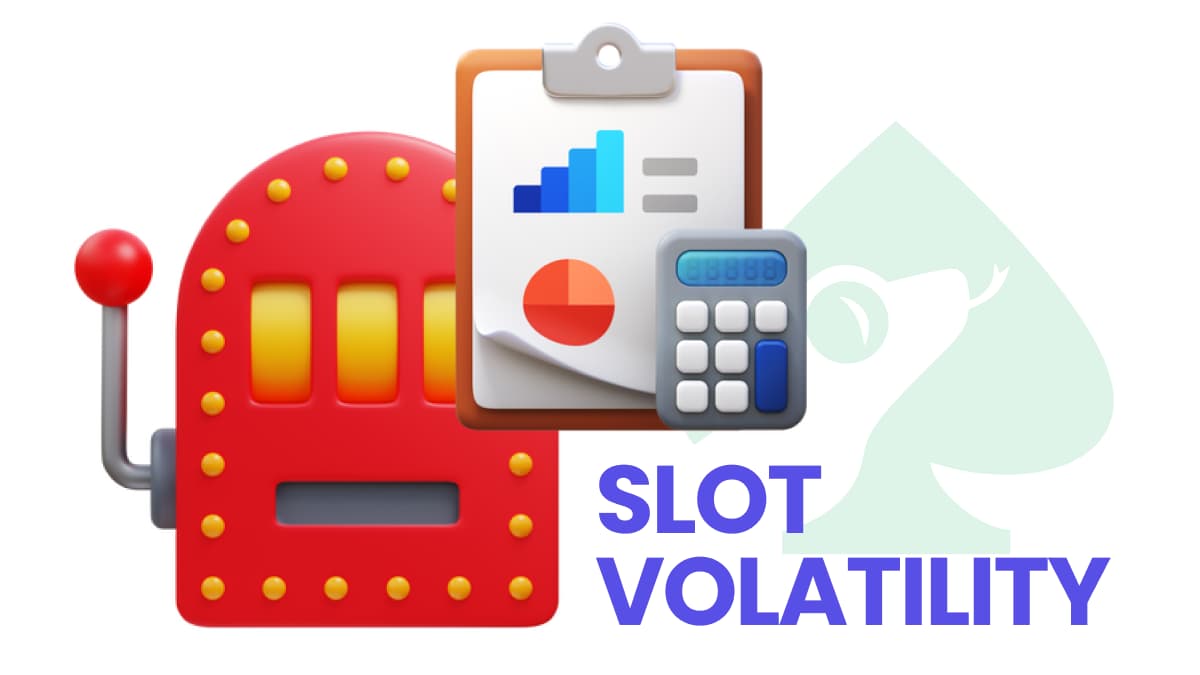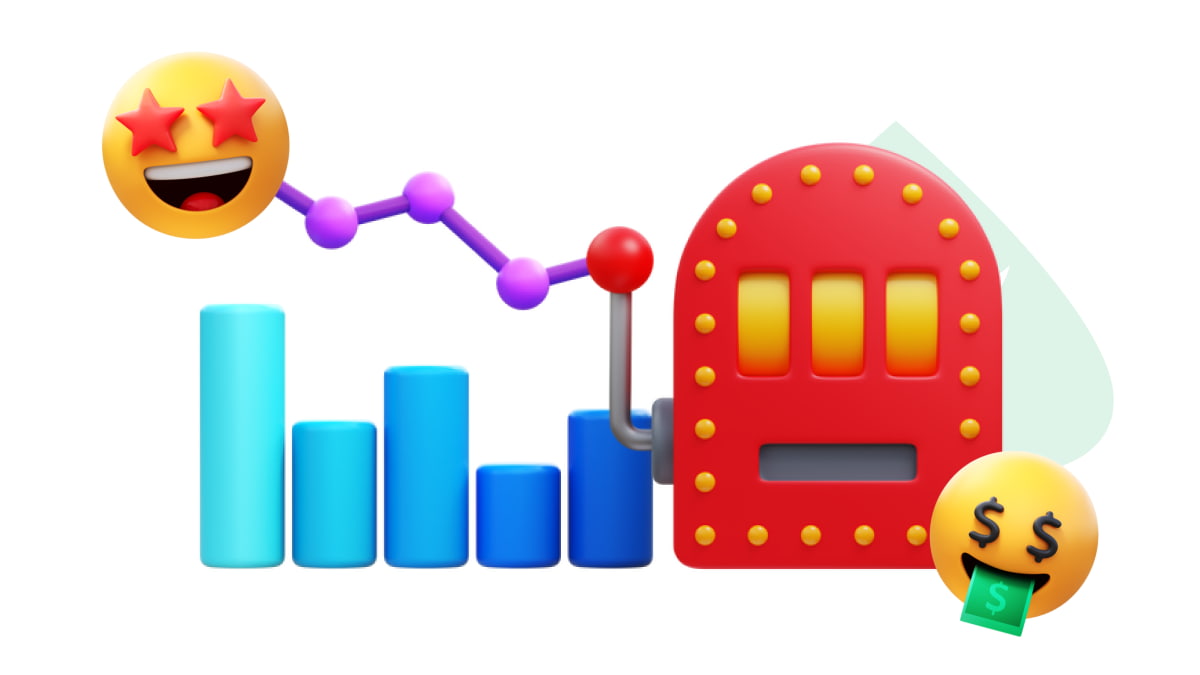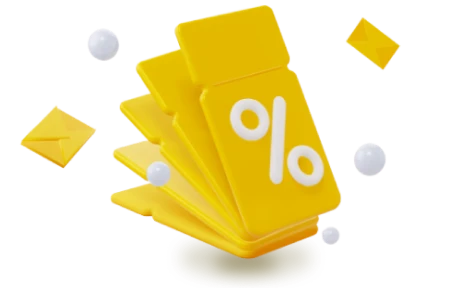What Is Slot Volatility?
Slots have three levels of volatility: high, medium, and low. Understanding what slot volatility is and how it affects your play is essential if you want to have a satisfying session with your favourite slots.
When we analyze slots, we often look at things like pay lines, reels, RTP (Return to Player), special features, and bonus games. The betting range is also crucial, as it determines the potential prizes you can win. However, we should also pay attention to the volatility of the slots. This is an aspect that often goes unnoticed, but it has a significant impact on the results you’ll get.
What Is Slot Volatility and Why Is It Important?
In simple terms, slot volatility can be defined as the relationship between risk and how often the machine pays out, along with the amount of those payouts. It’s important to note that this is a stable characteristic of slots: the volatility will always remain the same, regardless of external factors. The only way it could change would be if a new version of the machine is developed, but technically, that would be considered two different slots. Therefore, volatility is predetermined and will be the same across all online casinos.
The importance of volatility in slots lies in the statistical probability of winning a prize. Depending on the chosen volatility, it will be more or less likely to hit winning lines during your play. However, the relationship between risk and prize value is directly proportional. The higher the risk, the larger the potential prizes; if you lower the risk, the value of the possible prizes also decreases, although winning will be easier. For this reason, before playing a slot, it’s important to know its volatility range.
Slot Volatility Ranges
Typically, slots are classified into three groups based on volatility: high, medium, or low. However, in some cases, you might hear about medium-high or medium-low volatility slots. Each slot machine is classified into one group or another based on the relationship between the regularity and size of its prizes. As you can see, slot volatility is closely tied to the machine’s return-to-player (RTP).
High Volatility Slots
High volatility slots are those that generally award large prizes, but these prizes are spread out over time. They pay better than other machines, but you need a considerable budget to aim for their prizes. Sometimes, people talk about needing unlimited funds, and this isn’t far off the mark. These slots often have a lower RTP, frequently below 94%. The fewer winning combinations they offer, the more risk you take on.
Medium Volatility Slots
These slots don’t offer huge prizes, but they do pay out fairly frequently, placing them somewhere between high and low volatility. You’ll still need a decent bankroll, as you’ll need to make quite a few spins, but if luck is on your side, the prize can be significant. These slots typically have an RTP of 95-96%.
Low Volatility Slots
For more impatient players, these machines award small prizes every few spins. You likely won’t have to wait more than five or six spins to win, although the prize amounts will be noticeably lower than in higher-risk machines. The RTP for low volatility slots goes beyond 96.50%.
How to Determine a Slot Machine’s Volatility
Finding out a slot’s volatility is as easy as checking its technical details. Game providers usually provide this information, and many online casinos display it alongside the slot. You can even filter slots based on volatility. Another method is to check the slot’s RTP and deduce the volatility level from it. Here’s the general relationship:
- High volatility slots ? RTP below 94%
- Medium volatility slots ? RTP of 95-96%
- Low volatility slots ? RTP above 96.5%
A final option is to analyze the slot’s paytable. If the highest-value prizes are mainly found in the top prizes or bonus features, it’s likely a high volatility slot, especially if there’s a big jump between the payouts for aligning 3, 4, or 5 symbols. If the top prizes are relatively low and there are many chances to win small amounts, like earning multiple paylines in a single spin, the slot likely has low volatility.
High, Medium, or Low Volatility: Which Slot Volatility Index Is Better?
This is the million-dollar question, as each volatility range has its pros and cons, along with a player profile that suits it best. Depending on what you’re looking for, one option may be more suitable than another. Do you want to work steadily toward small wins, or would you rather wait for a big payout? It’s important to note that all options are perfectly valid.
There are three key aspects to consider. First, your budget. Managing your bankroll will be essential. Second, your playing style. Your patience in dealing with losing streaks or your eagerness to win quickly are important factors. Third, the level of risk you’re willing to take. After all, volatility and risk go hand in hand.
High Volatility Slots: Pros and Cons
-
Pros
- Offer the biggest prizes
- More element of surprise
-
Cons
- You need a large budget
Medium Volatility Slots: Pros and Cons
-
Pros
- Offer a balance between risk, frequency, and prize value
- The most common in casinos
-
Cons
- Do not guarantee big or frequent prizes
Low Volatility Slots: Pros and Cons
-
Pros
- Offer prizes every few spins
- Don’t require a large budget
-
Cons
- Prize amounts are not very high
It’s important to highlight that volatility doesn’t reveal the number of spins needed to win a prize or hit the jackpot. This is impossible to know, as the machines operate with a random algorithm. However, understanding volatility and RTP gives us an idea of what to expect, the chances of winning, and the types of prizes we might win.
















